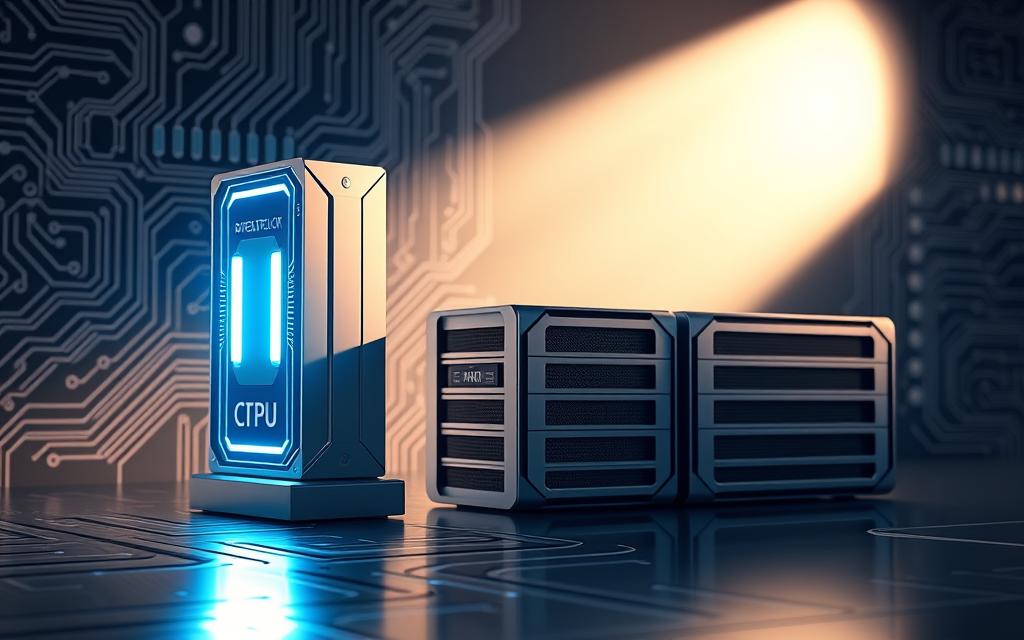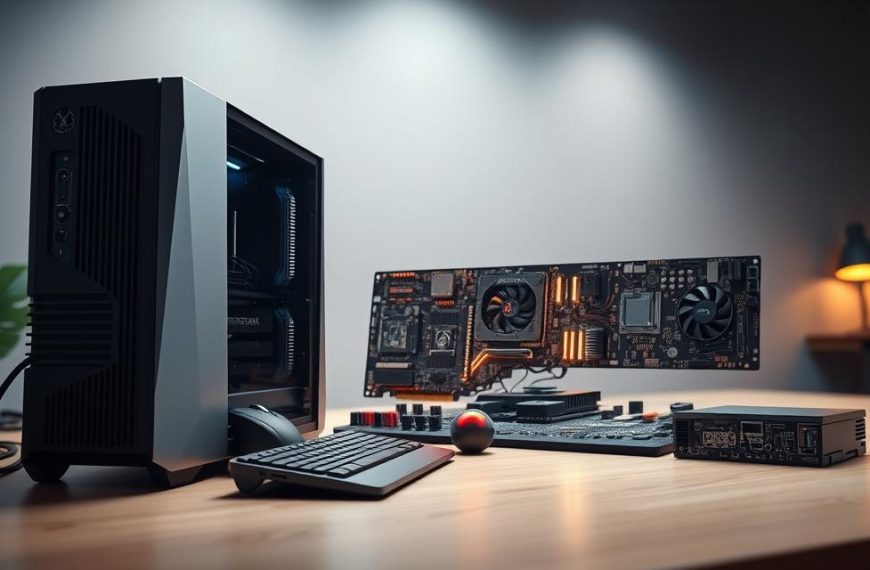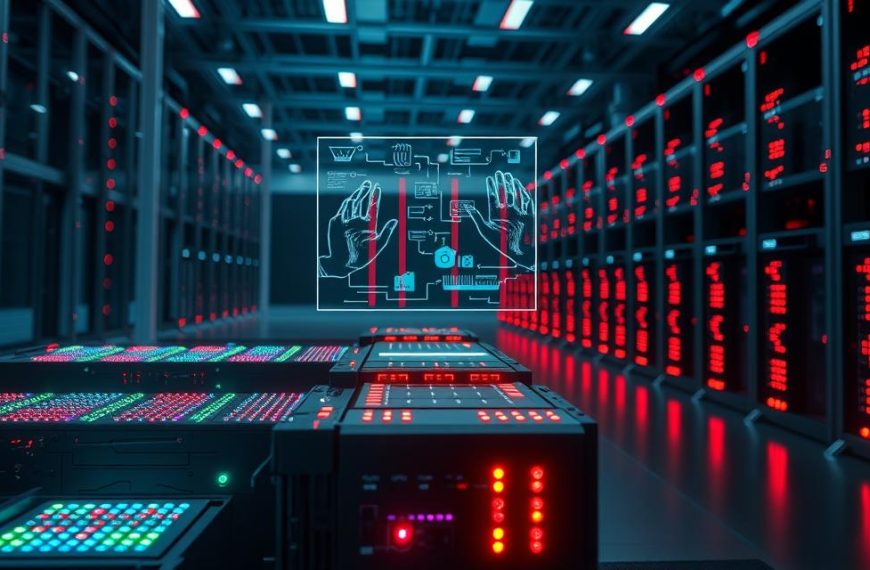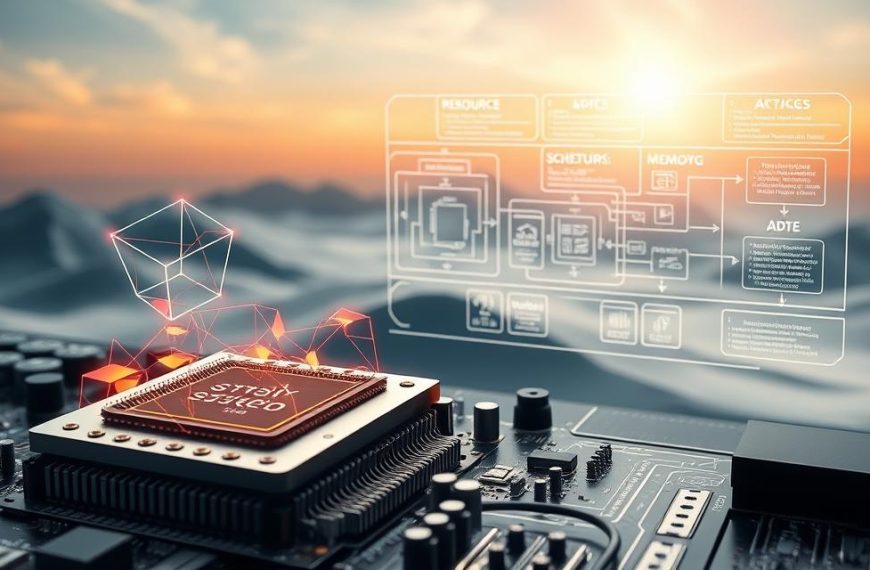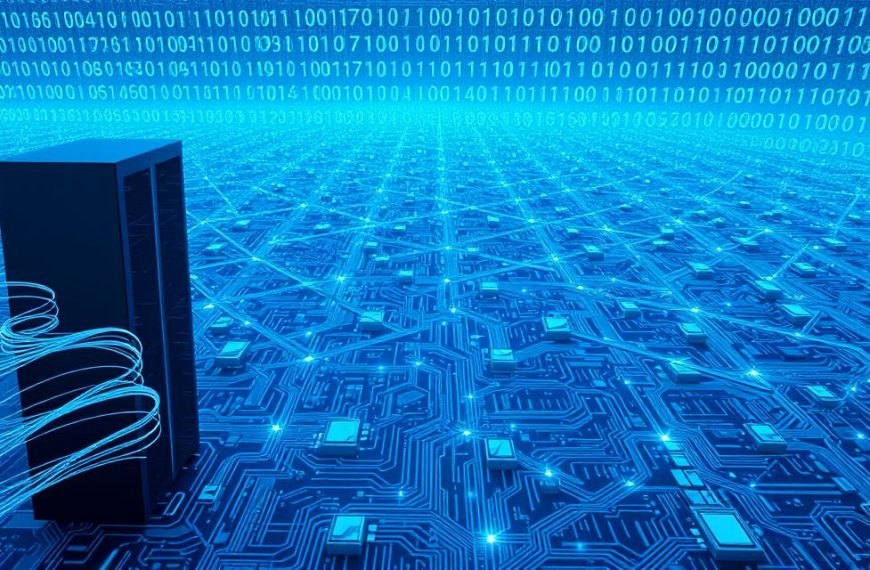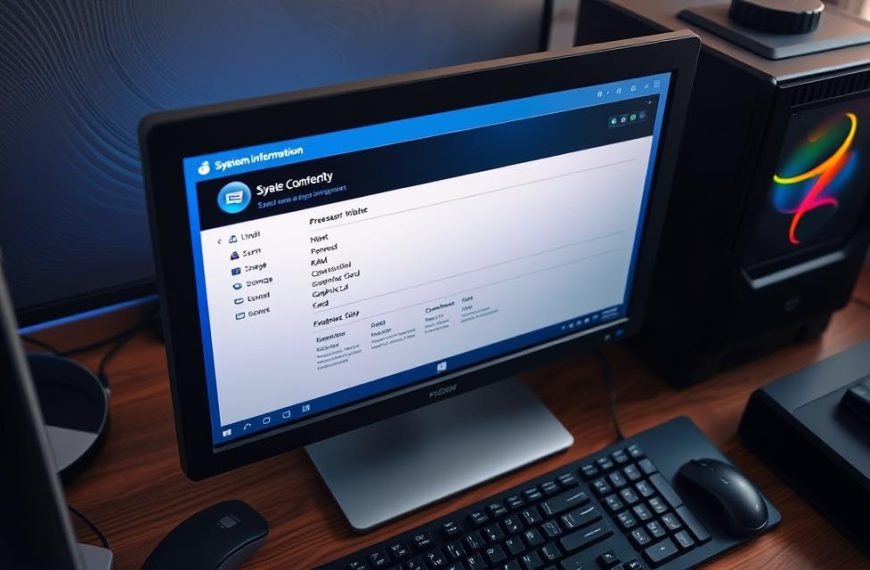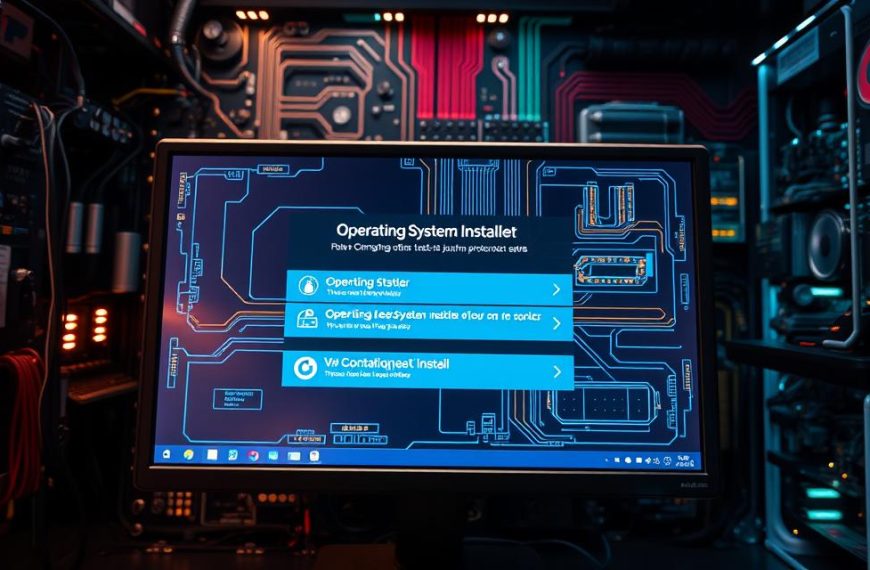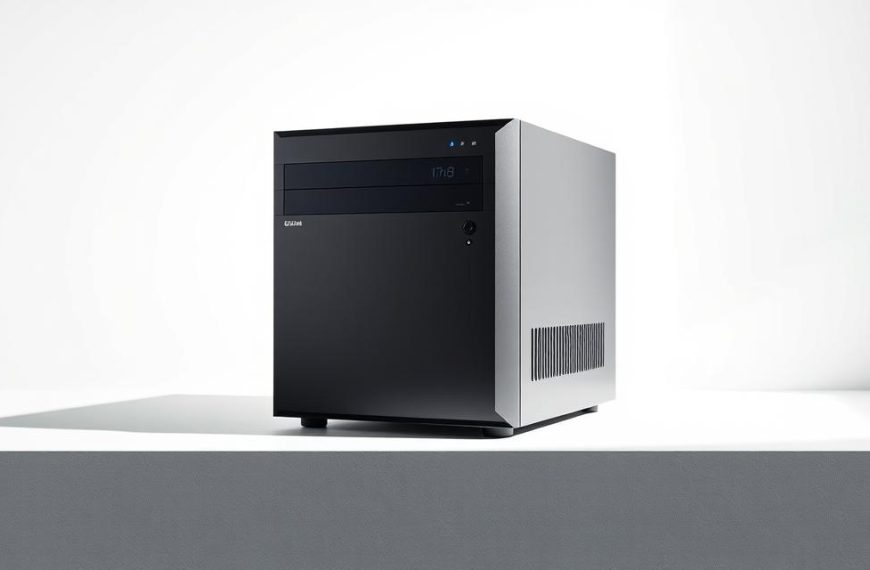Computer system design is all about creating computing solutions. It starts with understanding what users need. Then, it turns those needs into detailed plans for making it happen.
This field is about making systems that work well and meet their goals. It looks at things like how well they can grow, how easy they are to keep up, and how fast they can work.
It’s like planning a big construction project but for software. This planning is key to making efficient computing systems. These systems can handle today’s tasks and tomorrow’s too.
Knowing the basics of system planning is vital for today’s tech. This careful planning makes sure machines run smoothly. It also lets them change and grow as needs do.
Understanding What Computer System Design Is
Computer system design is about making efficient computing solutions. It combines technical skills with strategic planning. This way, systems work well under different conditions.
Fundamental Concepts and Definitions
System design splits into High-Level Design (HLD) and Low-Level Design (LLD). HLD looks at the big picture, like architecture and technology choices. It shows how system parts will work together.
LLD focuses on the details of each part. This includes things like database designs and how parts talk to each other. Together, HLD and LLD make systems that perform well and are reliable.
Key elements in system architecture concepts include:
- Component interaction protocols
- Data storage and retrieval mechanisms
- Security implementation frameworks
- Performance optimisation strategies
Evolution and Importance in Modern Computing
Computing has changed a lot, from simple systems to complex networks. Early systems were mainly about hardware, without much thought for growth or integration.
Now, system design is a formal engineering field. System engineers are key in tech companies. They make sure systems can handle more work without losing performance.
System design is now a formal study field, and system engineers are vital in tech.
Today, we focus on making systems that can grow, be reliable, and adapt. Good design lets systems keep up with new tech while staying compatible with old systems. This saves money and makes systems last longer.
The table below shows how traditional and modern system design differ:
| Aspect | Traditional Design | Modern Design |
|---|---|---|
| Focus | Hardware capabilities | System integration |
| Scalability | Limited expansion options | Modular expansion capabilities |
| Security | Basic protection measures | Comprehensive security frameworks |
| Maintenance | Frequent system overhaul required | Progressive updates and patches |
Today’s computing needs systems that can change with new demands. Good design keeps systems useful, even with fast tech changes. This ability to adapt is key in modern system design.
Essential Planning Phases for Computer Systems
Getting a computer system up and running needs careful planning. This planning covers both the technical side and the practical aspects. It makes sure the system works well and stays within budget and resource limits.
Analysing Requirements and Setting Objectives
System requirements analysis is key to a project’s success. It involves getting detailed info from all involved parties. This helps understand what the system needs to do and how it should perform.
Functional needs tell us what the system must do. Non-functional needs cover things like how fast it should work and how secure it is. A feasibility study checks if the proposed solutions fit within the given technical and financial limits.
“Understanding user needs through systematic requirements gathering prevents costly redesigns and ensures the final product delivers expected functionality.”
Key steps in requirements analysis include:
- Conducting stakeholder interviews and user surveys
- Documenting current workflows and pain points
- Establishing clear, measurable objectives
- Prioritising requirements based on business impact
Designing System Architecture and Layouts
The architecture design phase turns requirements into detailed plans. It outlines the system’s main parts, how they work together, and how data moves through the system.
Good planning looks at current needs and future growth. It makes systems that can grow with the organisation. Layout choices impact performance and how easy it is to maintain the system.
- Component modularity and interface definitions
- Data storage and processing methodologies
- Network infrastructure and connectivity requirements
- Security protocols and access control mechanisms
Budgeting and Resource Management Strategies
Good resource management computing strategies keep projects affordable and effective. Accurate cost estimates need a clear understanding of what’s needed in terms of hardware, software, and people.
Good budgeting covers both the initial costs and ongoing expenses. It’s about finding the right balance between quality and cost. Sometimes, this means finding creative ways to save money.
Successful resource management involves:
- Developing detailed cost breakdowns for all components
- Identifying possible ways to save money
- Having plans for when costs go over budget
- Keeping an eye on how resources are used during development
These planning phases help create detailed plans for systems. They guide the implementation process, reduce risks, and avoid unexpected problems.
Building and Assembling Computer Systems
The physical construction phase turns your design into a working system. It needs careful attention to detail. You must combine different parts to make a complete computing solution.
Selecting and Integrating Hardware Components
Choosing the right hardware components is key. Each part must match your needs and work well together.
Key Hardware: Processors, Memory, and Storage Devices
When picking a processor, think about speed, core count, and heat. Modern processors come in different levels to suit various needs.
Memory selection is about capacity, speed, and type. DDR4 and DDR5 modules have different speeds. The amount you need depends on your tasks.
Storage options have changed a lot. SSDs are fast, while HDDs are cheaper. Many use both for the best balance.
Peripherals add extra functions to your system. Important ones include:
- Input devices: Keyboards, mice, and special controllers
- Output devices: Monitors, printers, and sound systems
- External storage: External drives and backup solutions
Modern connections like USB-C, Thunderbolt, and Wi-Fi 6 keep your system up-to-date.
Configuring Software and Operating Systems
Proper software configuration makes hardware useful. The operating system is the base for all software.
When picking an operating system, think about:
| Operating System | Best For | Hardware Requirements | Software Compatibility |
|---|---|---|---|
| Windows 11 | General use, gaming, business | Moderate to high | Extensive |
| macOS | Creative professionals, development | Apple hardware only | Specialised applications |
| Linux Distributions | Servers, development, custom solutions | Low to moderate | Open source focus |
Installing drivers is a key step in system integration. As one expert says:
“Proper driver management ensures hardware components communicate effectively with the operating system, maximising performance and stability.”
For first-time builders, there’s a lot of help out there. This computer assembly tutorial covers hardware and software setup.
The last step is setting up security, creating user accounts, and installing apps. This makes sure your system works well from the start.
Achieving Efficiency in Computer System Design
To make computer systems efficient, we need to look at everything together. This means balancing how well they work, how much energy they use, and how they can grow. We’ll look at key ways to make systems better in all these areas.
Performance Optimisation Methods
Starting with performance optimisation means finding and fixing slow spots. Today’s systems use many ways to be faster and smoother.
Caching is a top method. Tools like Redis keep often-used data in memory. This cuts down on database searches and speeds up answers.
Load balancing spreads tasks across servers. This stops one server from getting too busy. It keeps performance steady, even when lots of people are using the system.
Improving databases is also key. This includes:
- Optimising queries and indexes
- Keeping databases well-organised
- Regular checks and monitoring
These steps help systems work well and fast. They meet users’ needs for quick and reliable service.
Energy-Saving Practices and Environmental Considerations
Energy efficiency computing is vital for saving money and protecting the planet. Modern systems use many ways to save power.
Choosing the right parts is important. Using energy-saving chips, solid-state drives, and efficient power supplies cuts down on power use.
There are advanced ways to manage power:
- Adjusting voltage and speed on the fly
- Putting systems to sleep when not in use
- Smart cooling systems
Thinking about the environment is more than just saving energy. It’s about cutting down carbon emissions and following global energy standards. This shows a company cares and can save money too.
The 4-step method for efficient system design helps put these energy-saving ideas into action.
Ensuring Scalability and Long-Term Usability
System scalability means a system can handle more work as it grows. Planning ahead lets systems grow without needing a complete overhaul.
There are two main ways to scale: adding more machines (horizontal) or upgrading existing ones (vertical). Most systems use a mix of both.
Planning for the future involves:
- Watching performance and trends
- Testing under heavy loads
- Regularly checking and adjusting capacity
Designing for growth means using modular systems. This lets parts be updated or swapped out easily. It keeps the system working well while it grows.
These performance optimisation and system scalability steps help cut costs and improve user experience. They are key for sustainable computing in today’s businesses.
Common Challenges and Solutions
Creating efficient computing systems faces many challenges. These include technical, financial, and adapting to new technologies. Even experts find obstacles that need smart solutions. Knowing these common problems helps designers build stronger systems.
Technical Obstacles in Design and Implementation
One big problem is hardware that doesn’t work well together. This can cause systems to fail or work poorly. Mixing old systems with new tech adds more issues that need careful fixing.
Testing thoroughly is the best way to tackle these problems. Engineers start with virtual models to check for issues. This helps find problems before they start building the system.
Fixing complex system issues needs a systematic approach. Instead of guessing, designers should test parts separately. Then, they check how they work together.
Managing Costs and Timelines Effectively
Many computer projects face budget and time problems. Unexpected tech issues or changes in plans can cause delays. These problems test even the best project management teams.
Using agile methods helps manage these issues. It lets teams adjust plans as they go. Regular checks help spot problems early.
Being proactive about risks is key. Teams should plan for possible cost and time issues. This way, they can quickly deal with problems when they happen.
Keeping Pace with Technological Advances
Technologies change fast, posing challenges for designers. What’s new today might be old tomorrow. Designers need to adapt quickly to these changes.
Designing systems with modular parts helps. This makes it easier to update as new tech comes along. It means not having to replace the whole system when something becomes outdated.
Staying up-to-date with tech is essential. Regular training and staying in touch with the industry helps. This way, designers can plan for future changes, not just react to them.
Adapting to new tech needs a balance. New ideas can improve systems, but proven solutions are safer. The best systems mix the old with the new wisely.
Conclusion
Computer system design is a complex field that needs careful planning and technical skill. This summary shows how good designs meet today’s needs and plan for the future. Every step, from the start to the end, must be done with great attention to detail.
Building efficient computing systems means making choices between speed, cost, and complexity. It’s important to have both technical knowledge and a strategic view. This way, systems stay useful as technology changes.
Great computer system design focuses on growth, easy updates, and saving energy. Using detailed planning methods helps organisations create systems that meet today’s needs and tomorrow’s challenges. This approach brings lasting value in our digital world.

